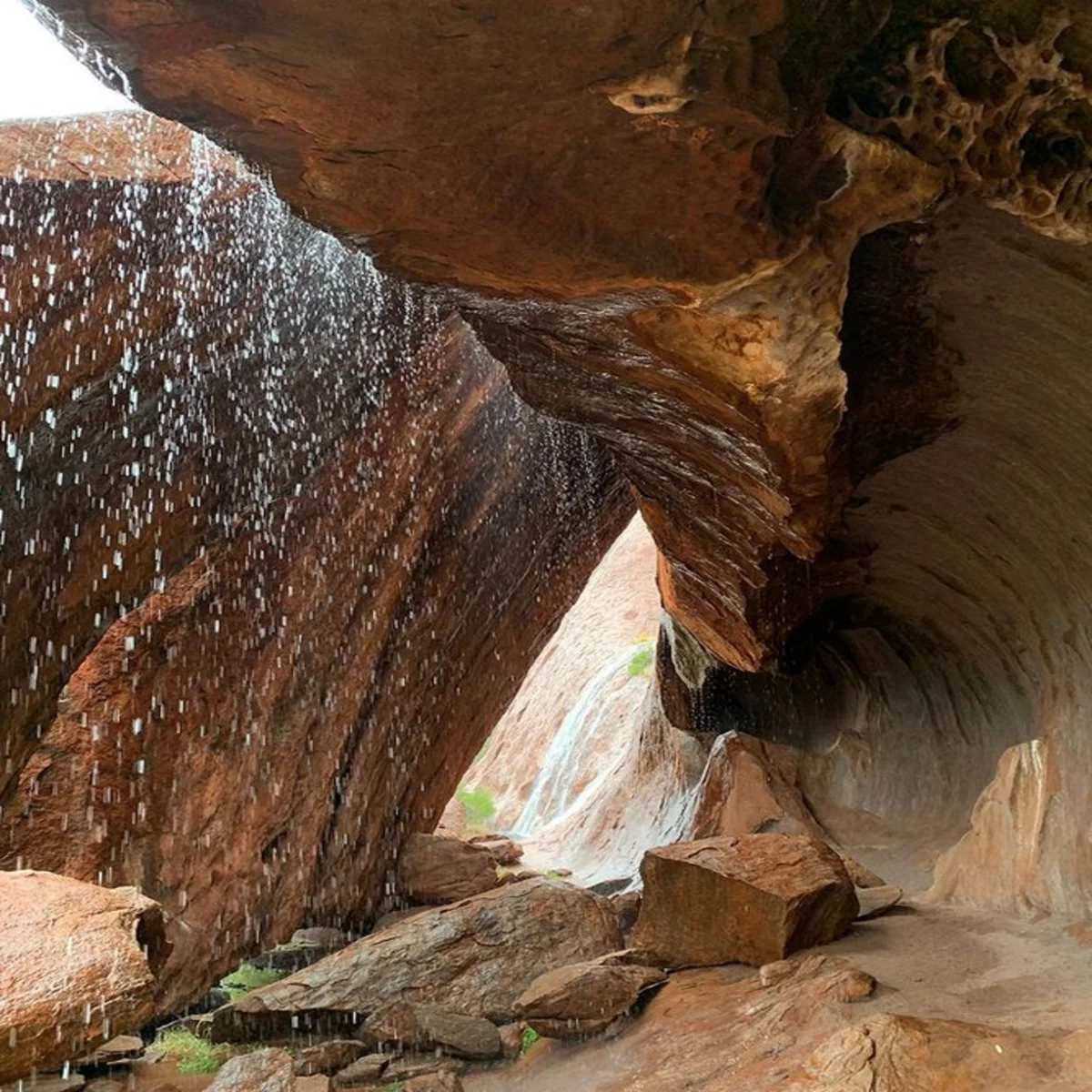Kakadu National Park contains a variety of landforms and a wide range of animal species, including large mammals, sharks, and aquatic reptiles.

Our rangers work diligently to protect rare and unique species that are exclusive to our area. There is an interesting tour that will show you all the wild life of the park, the Darwin to Kakadu Day Trip.
Tips for watching wildlife
Follow these tips to maximize your wildlife sightings in Kakadu while prioritizing your safety.
- Early morning and sunset are optimal times for observing wildlife.
- Use a torch to search for nocturnal animals at night, and be cautious not to disturb sleeping birds with strong spotlights.
- Examine the surroundings for indications of animal presence, such as footprints, excrement, and markings.
- Animals are attracted to waterholes along creek lines. It is best to sit quietly to avoid disturbing them.
- When observing animals, it's important to walk quietly, listen attentively, and watch for any signs of movement.
- Binoculars can be used to magnify objects for a closer view.
- Be cautious of animals, such as lizards and snakes, crossing roads.
- Please refrain from approaching, disturbing, or feeding wildlife.
- Visitors should be cautious of crocodile warning signs in the park, as there have been incidents of fatal and serious injuries caused by crocodiles.
- Snakes, pigs, and buffaloes have the potential to be dangerous, so it is best to keep a safe distance from them.
Explore our wildlife
Agile wallaby
The agile wallaby is a common macropod found in northern Australia, belonging to the same family as kangaroos.
The species can grow up to 80 cm in body length with a tail of similar length. Females are typically smaller than males.
Agile wallabies are distinguished by the white stripe on their thigh and the dark stripe on their cheeks.
Where to see it
Agile wallabies can be commonly seen in Kakadu's woodlands, often spotted in grassy areas near roads and campgrounds.
Wallabies can often be seen foraging around campsites, providing nature lovers with the opportunity to observe them peacefully.
Crocodiles
Kakadu is home to approximately 10,000 crocodiles, which represent 10% of the crocodile population in the Northern Territory.
There are two types of crocodiles: freshwater crocs with a narrow snout and scutes behind the head, and salties with a broader snout and no scutes.
Freshwater crocodiles can reach lengths of up to three meters, while male saltwater crocodiles can grow up to six meters in length and weigh over 1000 kg.
Both species have a lifespan of over 50 years.
Where to see it
Visitors can observe crocodiles safely on a commercial cruise along the East Alligator River or Yellow Water Billabong. Alternatively, they can view them from elevated platforms such as the Cahills Crossing viewing platform or Yellow Water boardwalk.
During the dry season, crocodiles can be easily spotted as the decreasing water levels cause them to gather in more confined spaces.
It is important to be cautious around bodies of water as there may be crocodiles present. Pay attention to warning signs and be alert near rivers and billabongs.
Behaviour
Saltwater crocodiles primarily consume fish, but they are also known to prey on a variety of animals, including turtles, birds, and large land mammals such as wallabies, dogs, pigs, horses, cows, and buffalo.
Freshwater crocodiles consume a diet consisting of fish, frogs, lizards, snakes, rats, bats, birds, and insects.
Crocodiles, like other reptiles, rely on their environment to regulate their body temperature. When basking in the sun, they may open their jaws wide to prevent overheating, although this behavior can also be a sign of aggression.
Mature crocodiles engage in territorial disputes, often resulting in deadly fights. Following a loss, the defeated crocodile may travel long distances to find new territory.
Other names
- Scientifically classified as Crocodylus porosus and Crocodylus Johnston, these are two species of crocodile.
File snake
The file snake is an aquatic snake with rough, file-like skin that helps it grip slippery prey such as fish.
File snakes are known for their high level of activity in water, although their loose skin presents difficulties for them when navigating on land.
Adult file snakes can grow up to 2.5 meters in length, with females typically being larger than males and giving birth to live offspring.
Where to see it
File snakes are frequently observed in the vicinity of freshwater pandanus plants, occasionally venturing onto land but typically remaining within a short distance from the water.
Behaviour
File snakes have a slow metabolism, requiring them to eat only once a month. Despite their infrequent meals, they are able to consume prey much larger than themselves in a short amount of time.
Kakadu's catfish is a common food source for many animals, often seen being eaten by snakes with poisonous barbs.
Culture
Bininj/Mungguy frequently hunt file snakes during Kurrung, which is the hot dry season from August to October.
Other names
- Scientific name: Acrochordus arafurae
Flatback turtle
The flatback turtle is the only marine turtle endemic to Australia.
The bird nests on Field Island (Gardangal) and several beaches near West Alligator Head.
Adults typically reach a length of about one meter and weigh approximately 90 kilograms.
Where to see it
Flatback turtles prefer to reside in shallow, soft-bottomed sea beds and may occasionally be observed sunbathing on the surface of the ocean.
Behaviour
Flatback turtles primarily consume soft corals and jellyfish as part of their diet.
Flatback turtles travel extensive distances to feed in places like Papua New Guinea and Indonesia, but only select specific sandy beaches in northern Australia to lay their eggs. Each female flatback turtle lays around 50 eggs per nest.
Conservation
Field Island (Gardangal) on Kakadu's northern coast is an important nesting site for critical flatback turtles.
Every year, teams of Kakadu staff and Traditional Owners spend three weeks on the island studying flatback turtles as they nest on shore.
The studies on turtle movements help in understanding their behavior and monitoring environmental threats such as climate change. Research findings indicate that the population of female turtles returning to the island remains stable.
Other names
- Scientific name: Natator depressus

Flying fox
Flying foxes are large bats that are herbivores and typically inhabit forested regions.
Kakadu is home to two species of flying foxes: the black flying fox and the little red flying fox.
Flying foxes do not use echolocation like many other bats. Instead, they rely on their strong sense of smell and excellent eyesight to find food, often travelling long distances every night.
Where to see it
During the day, flying foxes roost in large colonies in mangroves, paperbark forests, and monsoon rainforests.
At dusk, bats can be seen flying as they go out to feed.
Behaviour
Flying foxes are known for their social behaviour, communicating with each other through constant calls, which can create loud environments in large colonies.
Flying foxes are important for the ecosystem as they fly up to 30 km a night in search of fruits and nectar, spreading seeds and pollinating native plant species such as paperbark trees in Kakadu.
Other names
- The scientific names of two bat species are Pteropus scapulatus (little red flying fox) and Pteropus alecto (black flying fox).
Termites
Termites build large, pointed mounds up to six meters high in Kakadu.
Constructed from a mixture of mud and termite saliva, these mounds exhibit remarkable durability, with a lifespan of up to 60 years. Each mound contains an intricate network of tunnels that provide shelter for countless industrious insects.
Where to see them
Cathedral termite mounds are visible in the southern part of the park, with a particularly good viewing spot along the Maguk Road in the Mary River region.
Behaviour
Termites play a role in constructing homes for other creatures by eating dead wood to create habitats in trees.